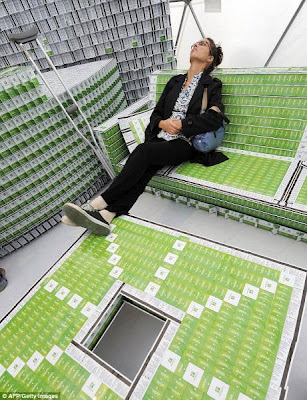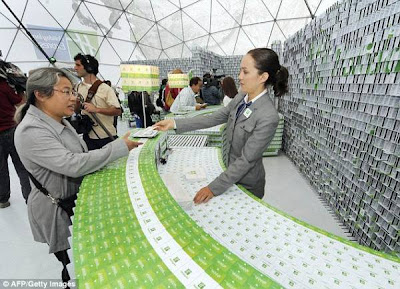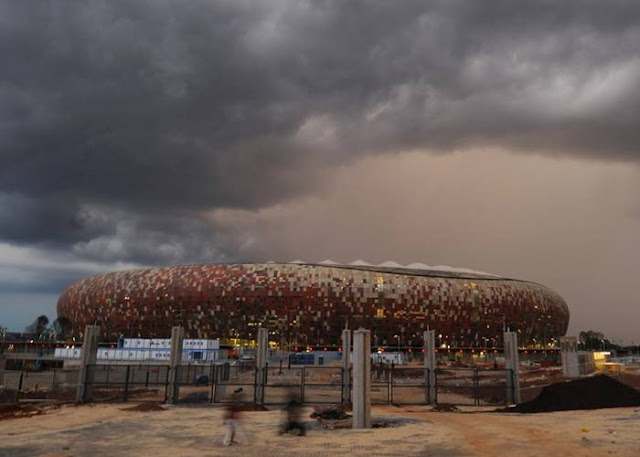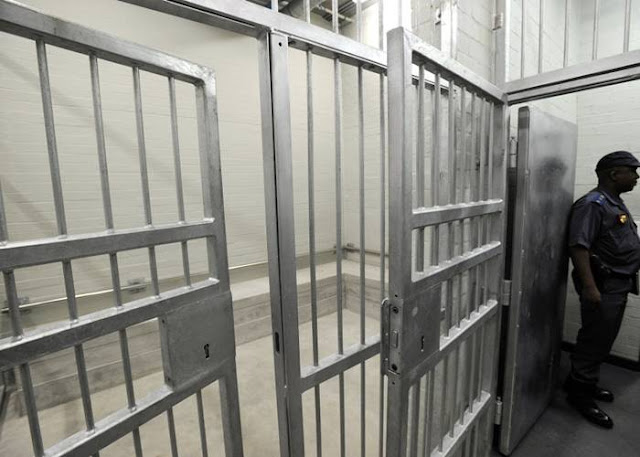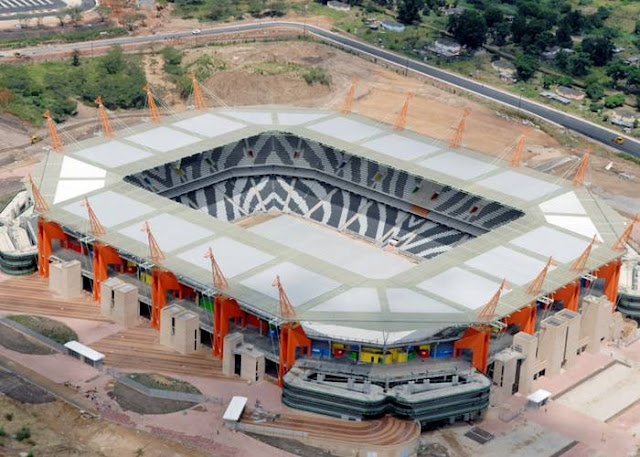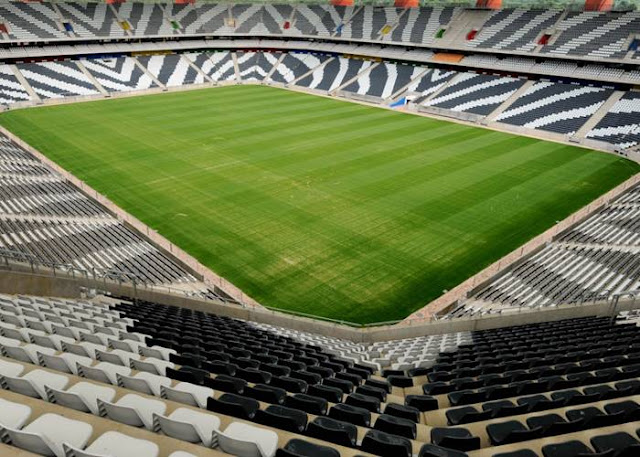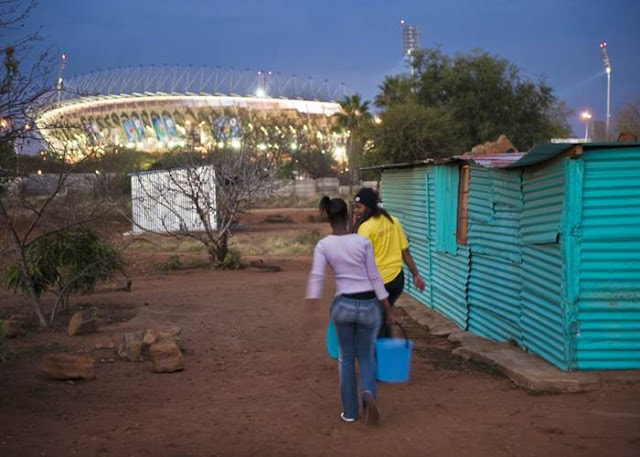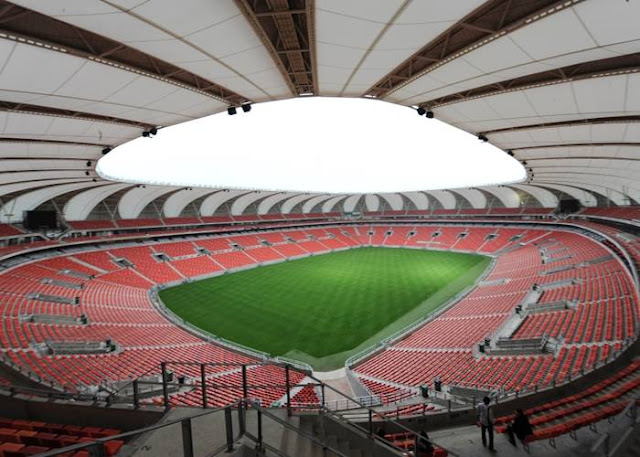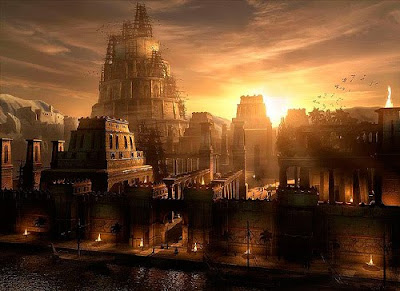Ever wondered what to do with all those hotel key cards you’ve accumulated? Maybe you’ve thought about building your own hotel out of the them. No? Well, that's okay, because Holiday Inn had that bright idea, and will be unveiling the Key Card Hotel—yes, a hotel made out of many, many key cards (more than even we have)—tomorrow in New York. The elaborate stunt is part of the chain’s “Key to Change” promotion, which gives guests the chance to win an all-expenses-paid trip to a relaunched Holiday Inn of their choice, anywhere in the world. That’s right: this is not your daddy's Holiday Inn. Spending $1 billion on the relaunch roll-out, IHG expects that 1,200 of its properties will have been relaunched by later this month.
Football Worldcup in South Africa
June 11 to begin the 19th FIFA World Cup. This year's event will be hosted by South Africa and will be the first World Cup played on the African continent. For the ten stadiums, in 9 cities will play 32 matches of national teams, among which, unfortunately, our lack of representation.Therefore, the great festival of football, I invite you to Football Fridays at 990px. Every Friday until the start of the championships, will show some photographs related to this edition of the championships, organized in South Africa. The first one is going symbols upcoming championships and the arena where the matches will be played, so treat not only for fans but also the blade changes for all fans of architecture. (29 photos)
1st GERMANY, Berlin, June 9, 2006: Employee security company presenting a statuette given to masters of the world by FIFA. Based on the information engraved on the winners of the previous championships. AFP PHOTO BARBARA SAX. more pictures after the break...
2nd Germany, Leverkusen, September 5, 2009: Zakumi (a combination of ZA - South Africa signs the ISO 3166-1 alpha-2 and the words of Kumi - in many African languages means "ten") - the mascot of the championship in South Africa - poses for photos before a friendly match between the representations of Germany and South Africa. AFP PHOTO DDP / Lennart Preiss
3rd GERMANY, Munich, 4 December 2009: Jabulani (which in Zulu means "celebrate") - A formal model of the ball, which will play football at the championships in South Africa. AFP PHOTO DDP / OLIVER LANG
4th GERMANY, Duisburg, 27 April 2006: Presentation Cup FIFA World Cup. AFP PHOTO DDP / Volker HARTMANN
5th South Africa, Johannesburg, 13 June 2009: The tunnel leading to the turf at Ellis Park stadium, Johannesburg. The stadium can accommodate 60 thousand. viewers. AFP PHOTO / ROBERTO SCHMIDT
6th South Africa, Johannesburg, 20 November 2008: Work on laying the new turf on the stadium's Ellis Park. AFP PHOTO / ALEXANDER JOE
7th South Africa, Soweto, 16 March 2010: General view of the stadium in Soweto, which will house nearly 95 thousand. viewers. (Photo: 2010 FIFA World Cup Organising Committee South Africa via Getty Images)
8th South Africa, Soweto, 13 December 2009: The football stadium on the outskirts of Johannesburg. AFP PHOTO / ALEXANDER JOE
9th South Africa, Soweto, 28 March 2010: A lump seen the stadium in Soweto in the late evening. AFP PHOTO / ALEXANDER JOE
10th South Africa, Johannesburg, 23 June 2009: Children playing football in a stadium in Soweto. AFP PHOTO / YASUYOSHI Chiba
11th South Africa, Soweto, 28 March 2010: The football stadium in Soweto at night. AFP PHOTO / ALEXANDER JOE
12th South Africa, Cape Town, 2 December 2009: Night panorama of Cape Town and the scene of the upcoming world championships in football, with a capacity of 68 thousand. viewers. (Photo: Darren Stewart / Gallo Images / Getty Images)
13th South Africa, Cape Town, 25 April 2010: Panorama of Cape Town with a visible Green Point Stadium. AFP PHOTO / Dean Treml
14th South Africa, Cape Town, 22 March 2010: The Prayer (here sitting in the stands 45 thousand. People) at the newly opened stadium in Cape Town. AFP PHOTO / Roger Bosch
15th South Africa, Cape Town, March 1, 2010: One of the locker room at the Green Point stadium. AFP PHOTO STEPHANE DE SAKUTIN
16th South Africa, Cape Town, March 1, 2010: The cell at the police station, located at Green Point stadium. AFP PHOTO STEPHANE DE SAKUTIN
17th South Africa, Durban, December 8, 2009: Cloakroom Moses Mabhida Stadium in Durban. AFP PHOTO / ALEXANDER JOE
18th South Africa, Durban, December 8, 2009: View of the grandstand and turf stadium in Durban. AFP PHOTO / ALEXANDER JOE
19th South Africa, Durban, February 12, 2010: Moses Mabhida Stadium in Durban. AFP PHOTO / EUROLUFTBILD
20th South Africa, Polokwane, 15 February 2010: Aerial view of the stadium Peter Mokaby in Polokwane, where 45 thousand can cheer. viewers. AFP PHOTO / EUROLUFTBILD
21st South Africa, Nelspruit, 21 March 2010: Football Stadium Mbombela in Nelspruit, which stands at 44 thousand fit. viewers. AFP PHOTO / STR
22nd South Africa, Nelspruit, March 21, 2010: Tribune, and turf stadium in Nelspruit. AFP PHOTO / STR
23rd South Africa, Nelspruit, 21 March 2010: The entrance to the toilets for the ladies at the Mbombela stadium. AFP PHOTO / ALEXANDER JOE
24th RPA, Rustenburg, June 16, 2009: In the foreground a woman carry water from the distribution point. On the second plan, the Royal Bafokeng Stadium - multi-use stadium in Rustenburg. AFP PHOTO / FRANCOIS XAVIER MARIT
25th South Africa, Rustenburg, June 21, 2009: A view of the whole object Royal Bafokeng Stadium, located 42 thousand in the stands. viewers. AFP PHOTO / FRANCOIS XAVIER MARIT
26th South Africa, Port Elizabeth, 23 June 2009: Nelson Mandela Bay Stadium in Port Elizabeth capacity of 48 thousand. viewers. AFP PHOTO / ALEXANDER JOE

27th South Africa, Port Elizabeth, July 23, 2009: Nelson Mandela Bay Stadium at night. AFP PHOTO / JOE Alexander
28th South Africa, Port Elizabeth, May 14, 2010: Sokolniki Arnold Slabbert, together with her students - a wandering hawk - involved in killing pests on Nelson Mandela Bay Stadium (mainly pigeons and rodents). AFP PHOTO / Gianluigi GUERCIA
29th South Africa, Port Elizabeth, May 14, 2010: The peregrine falcon is at work on the stadium Nelson Mandela Bay. AFP PHOTO / Gianluigi GUERCIA
Labels: Country
Did We Already Have Electricity 2000 Years Ago
Sunset in Babylon By Raphael Lacoste / Photo from Raphael Lacoste
If you thought electric bulbs and batteries were modern European inventions, here is something to put that fact to question! A 1936 excavation of some 2000-years-old ruins in an ancient Baghdad village unearthed a small yellow clay vase about 6 inches in height. It had a copper-sheet cylinder lining within it that measured 5 x 1.5 inches.
A soldering material (most probably lead and tin) was used at the top edge of this mysterious cylinder, bearing remarkable affinity to modern solder alloy. A punched-in copper disk at the base of this cylinder was sealed with asphalt or bitumen. A similar asphalt layer also found at the top end held together an iron rod, bearing acidic corrosion marks inserted within the cylinder.
Ever since its recovery, several possibilities have been suggested by experts. Wilhelm König, the German archaeologist brought forth a startling idea that the clay pot could well be a form of electric battery. Following his theory, a Massachusetts based engineer Willard F.M. Gray created a model of this battery in 1940, filled it with copper sulfate solution and proved that it could produce electricity.
In 1970, the German Egyptologist Arne Eggebrecht followed in the footsteps of Gray. He supplanted the copper sulfate solution with fresh grape juice to generate about 0.87V of electricity for gold plating a silver statue. These experiments proved beyond doubt that 1,800 years old civilizations knew how to produce and utilize electricity by means of an acidic agent.
The path breaking conclusions of Konig lost its significance in the turmoil of the World War II. His European co-excavators had raised objection to his theories since the presence of batteries at a predominantly religious age seemed an unlikely possibility. However, soon a set of ‘ancient batteries’ were unearthed from the same sites in Iraq, inspiring a score of baffled propositions.
While some speculated that the electrochemical set up of the ‘batteries’ was meant to produce electricity, others refuted this claim. A series of thinly electroplated objects were found by König in Baghdad that probably used these cells though others opined that these were mainly fire-gilded. Demonstrative experiments have proved that though this battery uses a very primitive mechanism, it could plate a small object with a micrometer thick gold coat over two hours.
However, the electroplating theory was never unanimously accepted and other possible usages were suggested for these batteries. Paul Keyser hinted that the mild electric shock produced by using an iron bar in vinegar was used by healers or priests for electro-acupuncture. It could also have been a trick to create a sense of awe among devotees by electrifying the metal statue of a God.
However, the electroplating theory was never unanimously accepted and other possible usages were suggested for these batteries. Paul Keyser hinted that the mild electric shock produced by using an iron bar in vinegar was used by healers or priests for electro-acupuncture. It could also have been a trick to create a sense of awe among devotees by electrifying the metal statue of a God.
Although these possible secular and religious applications for the ancient Baghdad batteries were credible, some archaeologists expressed their skepticism for the electrical theory. They raised questions on the absence of wires and the presence of bitumen insulators for the copper cylinder as the problem points of these so-called galvanic cells.
They pointed at the bitumen seal as an evidence for the clay pots being used for non-electronic, storage purpose. Accordingly, they said these were secure storage vessels for preserving sacred scrolls, parchments or papyrus documents within the airtight chamber of the cylinder.
They pointed at the bitumen seal as an evidence for the clay pots being used for non-electronic, storage purpose. Accordingly, they said these were secure storage vessels for preserving sacred scrolls, parchments or papyrus documents within the airtight chamber of the cylinder.
Dendera – Egypt / Photo from Nikki&Michi
However, in the Temple of Dendra in Egypt a stone relief seems to feature an electric lamp throwing light. The believers also pointed out that there was no soot in any of the pyramid shafts or underground tombs of Egypt, which must have stayed if the workers used fire as a source to make the elaborate carvings and decorations within the chambers. Many think, there must have been an alternate source of light other than fire and this speaks volumes in support of the battery theory. The concept of using polished copper plates for mirrors does not hold much ground as a promising source of light.
Carved walls in the temple’s crypt / Photo from Lenka P
The Dendera Light Bulbs / Photo from Hazelra
The Dendera Light Bulbs / Photo from Hazelra
Currently the Baghdad batteries are preserved as valuable pieces of curios in the Baghdad Museum. The dating of these unique clay vases revealed them to be belonging to the Parthian occupation era, somewhere between 248 BCE and 226 CE, although disputed. The Parthian were predominantly a warrior clan and not given to scientific sophistications. Dr St John Simpson of the British Museum attributes the Baghdad batteries to Sassania.
Via : Link
Subscribe to:
Posts (Atom)










